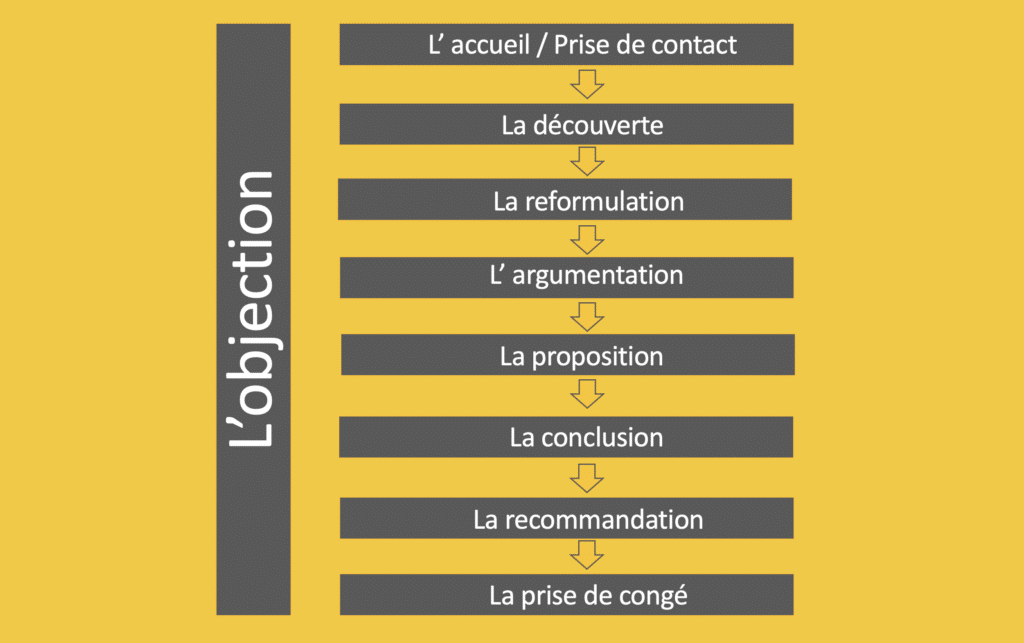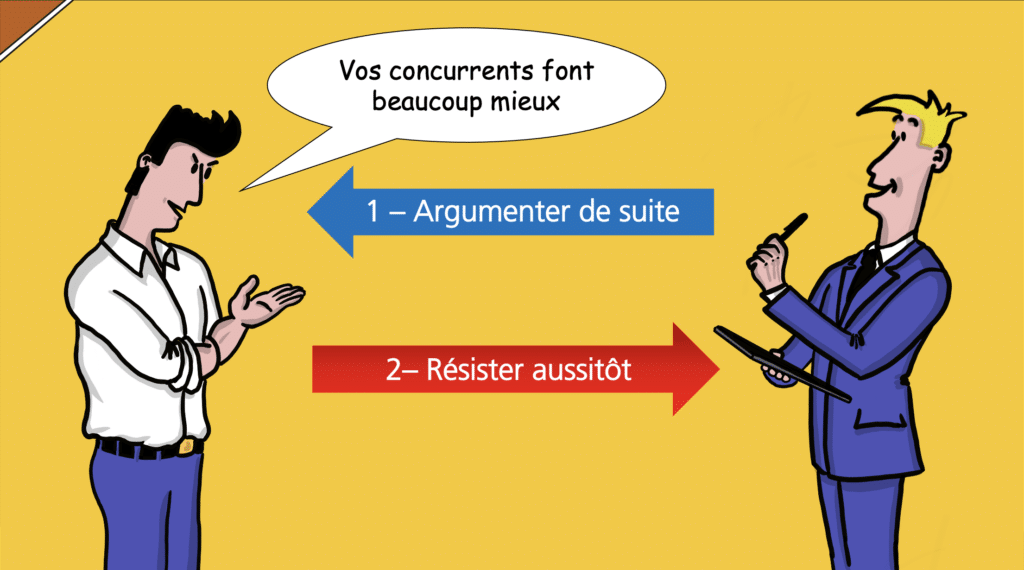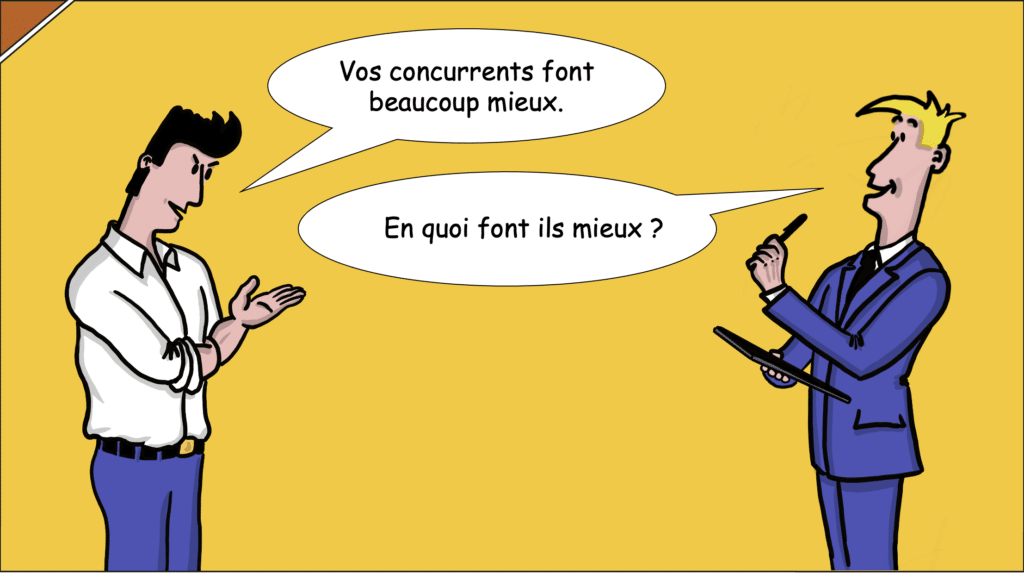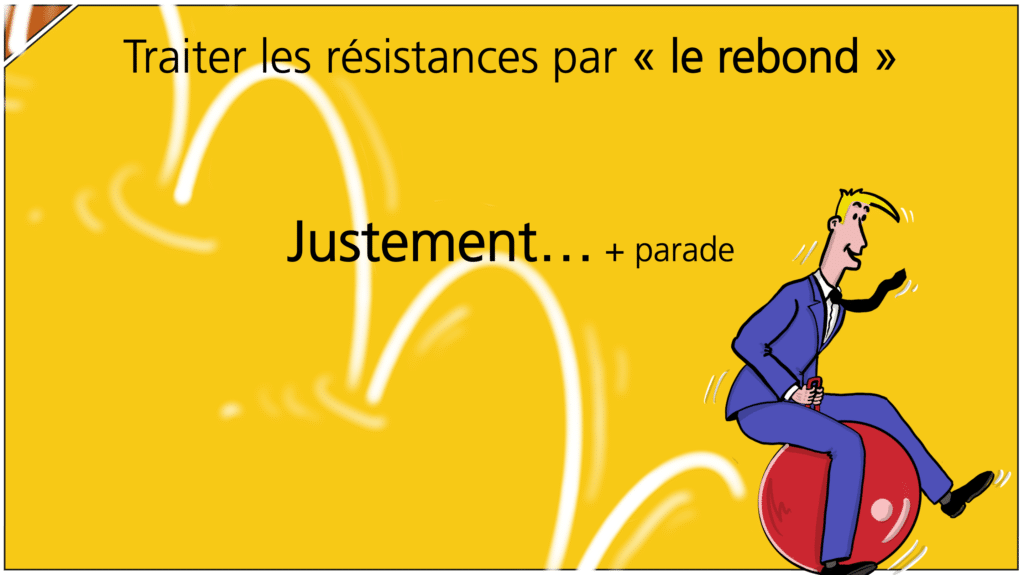The objection The customer has always been part of the salesperson's daily life, and this is even truer today. Whether you're a beginner or an experienced salesperson, a manager of a team In the sales process, it's essential to have the right tools for dealing with a customer's objections. What are the different types of objection? What posture should you adopt? How do you respond to objections and turn them into opportunities? Find out from Loïc Jeunot, a sales trainer with a wealth of experience in the field.

"I don't need anything"; "I've only got five minutes to spend with you"; "It's too expensive"; "Your competitors do it much better" or "I'll think about it". What salesperson hasn't been thrown off balance by a customer's objection? It's part of their daily routine... and increasingly so. Customers and prospects are more informed and autonomous, and know the prices charged in a given sector.
An objection is a reproach, a demand on the part of the customer. It can occur at any point in the sales process... even though most theorists place it after the sales pitch and the price announcement.
"Price is a frequent source of objections, but it's not the only one, and it can happen earlier in the commercial relationship".

Loïc Jeunot.
This applies whether the objection is made during the initial contact, the product presentation, the price announcement or even the conclusion, it is essential to have a solid repartee and appropriate arguments For successfully negotiate and conclude the sale.
1/ Adopt the right posture when dealing with l'objection
Objections are natural, so don't take them personally. On the contrary, you should first identify it clearly and then deal with it... without provoking it.
Getting rid of bad reflexes
Firstly, it is necessary get rid of bad reflexesIn other words, respond instantly to the objection. The sales assistant, on the defensive, will only reinforce the customer's mistrust and suggest that he is not in control of the situation.

Loïc Jeunot.
So how do we go about it?
- do not argue directly, because the prospect is not generally in a listening mood;
- listen to the person you are talking to.
"Objections should therefore not be seen as an attack, a value judgement or a failure, but as an opportunity, provided you have the right reflexes and have established the right relationship with the person you are dealing with".
Identify the real objection
Understanding the reasons why the person you are talking to objects will help you to better understand what the objection is about and to prepare for it.
You need to know how to identify the "real" objection of the person you're talking to so that you can adopt the right stance.
This means both detecting the "objection behind the objection" and detecting the type of objection you are facing. Is the person you're talking to acting this way out of reflex or habit? Is it well-founded, sincere, a test on the part of the person you are talking to? Does he need to be reassured? To feel more confident? Or is it a call for negotiation?
Michaël Aguilar, in Overcoming customer objections, draws up a typology of objections:
- the " false objections "These are often general, insincere and unfounded, and usually arrive very early in the sales process. The aim is to discourage the salesperson and get rid of them;
- the " tactical objections "These are often insincere and unsubstantiated, and constitute a test or a starting point for negotiation;
- the " sincere objections "Objections can arise at any point in the sales process and are valid for the other party, which does not mean they are valid for the salesperson.
Knowing the different types of objections means you can spot them and respond appropriately. The key is to know how to manage your emotions and those of your customer, to accept objections and use them, not to anticipate them and to act in two stages by setting up an "adult-to-adult" dialogue.
2/ Tools for turning objections into sales opportunities
Several tools can be used to respond effectively to objections. Simple and effective, the method involves two steps. A few key words and sentence structures often make all the difference. The aim: to make the use of these tools an unconditional reflex for the sales assistant.
Ask a question
The idea is to answer the objection with a question. In other words, rephrase the objection. After all, it's up to the sales assistant to lead the discussion. There are several advantages to this: the objection is clarified, the other person feels listened to and the sales assistant can prepare appropriate arguments. For example, to the objection "You're wasting your time", you can ask "What do you mean by that? It is important to avoid "why" questions, which generate negative and restrictive responses.

The rebound technique
The second tool for responding to objections is the rebound techniqueused in theatre. The idea is to start your argument with " That's just it... "followed by silence. With this term, the objection is recognised and you can adjust your response accordingly. Be careful, however, to use it wisely, as it is more directive than the first tool.
Another semantic subtlety: don't use "Yes, but", because it puts you in opposition to the person you are talking to. Prefer "Yes, however", which means that what you are saying is a possibility and that there are other solutions.
For greater efficiency, alternate or combine the two tools.
Read also: Building legitimacy through public speaking

3/ Customer objections, examples of scenarios
A question of time
To the objection " I only have five minutes to devote to you "You can use the rebound technique. The person you're talking to doesn't want to spend more than five minutes with you. Don't try to argue or negotiate for extra time. You simply need to make an appointment. You can bounce back with "That's right, let's make an appointment!" or "That's fine with me, that's more than enough to make an appointment", and then make a direct suggestion "When would you be available to talk?" or "At the end of next week? Friday?
A question of cost
To the objection " It's too expensive "If you don't know why the other person is saying what he or she is saying, you need to find out the real reason why and use the question-answer method. For example, "What makes you say that? What's too expensive? This is a request from your customer to enter into negotiations. You also need to validate the objection "Yes, you're right, I agree with you". The assumption is that the customer is informed, has made a market comparison, but perhaps has been misinformed, only has part of the data or has come to the wrong conclusion. So we ask them "How far have you got with your research?" and "You're right to have done your research, here's what I suggest...".
Competition
In response to the objection " Your competitors are doing much better "The wrong response would be "No, I'm number one in the sector". Instead, answer "Yes, absolutely, how are they doing much better? At what price? And then "I'm interested in knowing how they do it better".
What you need to remember: an objection is not a value judgement against the seller, even though many people think it is. It's a way for the buyer to reassure themselves and test the seller. Responding and justifying yourself in the face of an objection is a very bad reflex. There are simple tools you can use to turn objections into opportunities. First, find out whether the objection is well-founded or not, whether it's a call for negotiation, for example. Then ask a question or start your answer with "precisely" and develop your argument. In any case, when a customer or prospect objects, it's a sign that they're being sold to.'is a pretty good sign!





